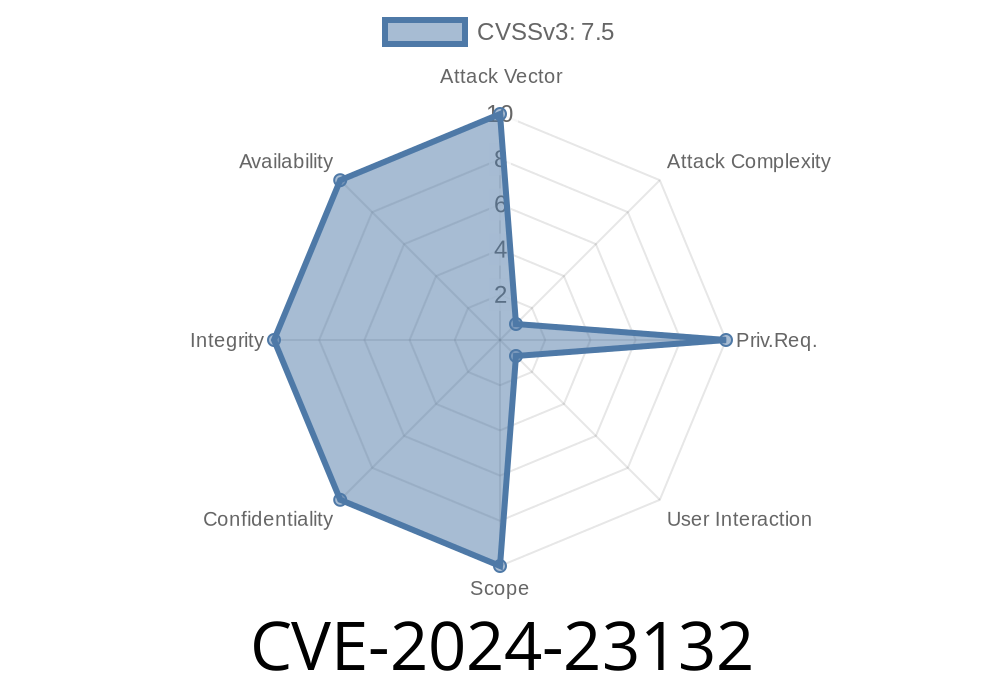In early 2024, cybersecurity researchers discovered a critical flaw in Autodesk AutoCAD, tracked as CVE-2024-23132. This vulnerability, lurking in the way AutoCAD’s atf_dwg_consumer.dll parses certain files, could let attackers crash the software or even run their own code. Below, we’ll break down what CVE-2024-23132 really is, why it’s dangerous, and how a simple STP file could become a hacker’s Trojan horse.
What Is CVE-2024-23132?
Autodesk AutoCAD is one of the world’s most popular computer-aided design (CAD) applications. The vulnerability CVE-2024-23132 exists in the atf_dwg_consumer.dll library, which helps AutoCAD read and process various CAD files—including the widely used STP (STEP) format.
> Key issue: If a hacker creates a carefully crafted (“malicious”) STP file, opening it in AutoCAD can trigger a memory corruption bug, specifically a write access violation. In simple terms, the program is tricked into writing data where it’s not supposed to—this can crash the software, or worse, let the attacker control your computer.
Why is this so dangerous?
This bug, *especially when combined with other vulnerabilities*, lets attackers run code on your machine with the same permissions you have. If you’re logged in as an admin, they can do pretty much anything—install malware, steal files, snoop on designs, or use your computer as a springboard into a company network.
Technical Details (How It Happens)
When you open an STP file, atf_dwg_consumer.dll has to parse and convert data from the file into something AutoCAD can work with. However, if the file contains unexpected or malformed information (crafted by a hacker), the DLL doesn’t check things properly and writes to memory locations in a way that’s not safe.
Simplified Exploit Scenario
// Not actual Autodesk source, but illustrative pseudocode
int parse_entity(data) {
char buffer[128];
// Suppose buffer overflow due to unchecked copy
memcpy(buffer, data, data_length); // if data_length > 128, overflow!
}
If a malicious STP file purposely includes an entity with excessively long or malformed fields, parsing that entity can overflow the buffer or corrupt memory. This lets an attacker plant code to be executed once the corruption triggers, often with the privileges of the user running AutoCAD.
Here’s what a snippet of a malicious STP file could look like (simplified for illustration)
ISO-10303-21;
HEADER;
FILE_DESCRIPTION(('Malicious test file'), '2;1');
ENDSEC;
DATA;
#10=PRODUCT('A','AAAAAAAAA...<junk data to overflow>...', 'Autodesk', ($));
ENDSEC;
END-ISO-10303-21;
A field (like the product name) might be spoofed to include several kilobytes of data, triggering the atf_dwg_consumer.dll bug.
Exploit Detail – Chaining Vulnerabilities
On its own, CVE-2024-23132 may cause a crash—showing a “memory access violation” error. But, skilled attackers can chain this bug with others:
Achieve reliable code execution in the user’s context
A working exploit could arrive as an STP file attachment in an email, or through a download link claiming to be a “design review.”
How to Stay Safe
Autodesk has released patches.
If you use AutoCAD, update to the latest version ASAP.
References
- Autodesk Security Advisory for CVE-2024-23132
- NVD Entry for CVE-2024-23132
Smart safety tips
- Don’t open CAD files (especially STP/STEP) from people you don’t trust
- Make sure your email/document security tools are updated
Final Words
CVE-2024-23132 is a reminder that even everyday design software can become a gateway for attackers, especially when handling files from outside sources. If you or your company use AutoCAD, patch immediately, watch for suspicious attachments, and stay alert for further updates from Autodesk.
If you want to see deeper technical breakdowns or proof-of-concept exploits, keep an eye on security researchers’ blogs and official advisories. For now, awareness and patching are your front-line defense.
Timeline
Published on: 02/22/2024 04:15:08 UTC
Last modified on: 08/01/2024 13:47:08 UTC
